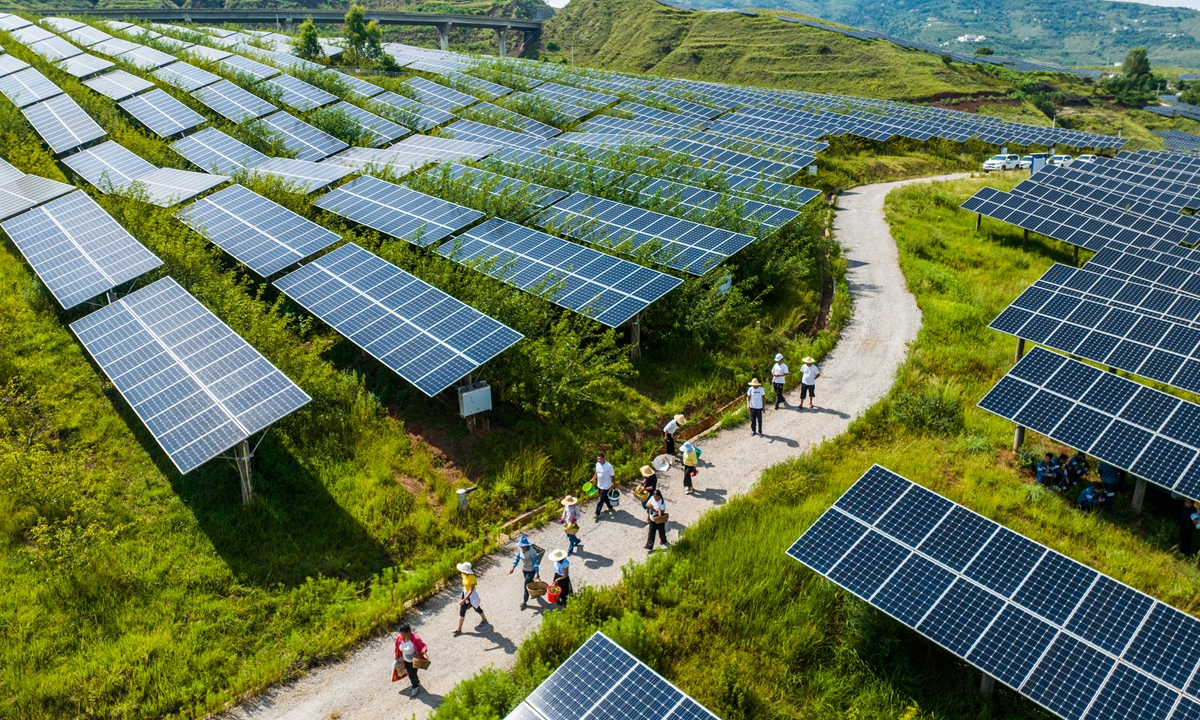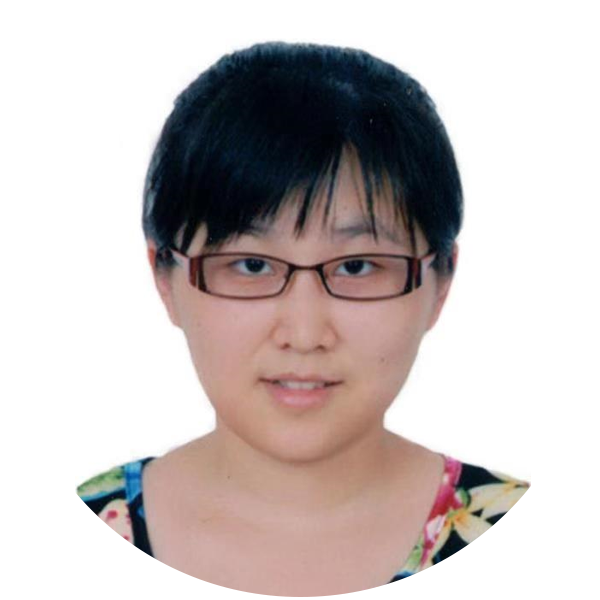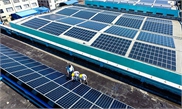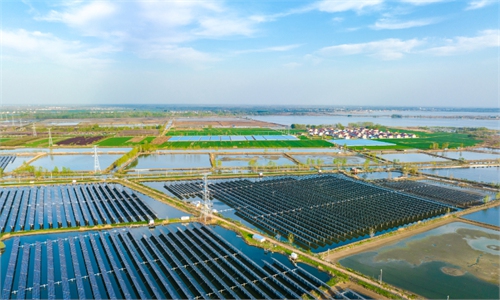US solar tariff decision unpopular, won’t overturn China’s advantages in clean energy

Solar panels in Bijie, Southwest China’s Guizhou Province Photo: VCG
The US Commerce Department on Friday issued a final determination that five Chinese solar panel companies have been circumventing anti-dumping and countervailing duties by routing their operations through four Southeast Asian countries.
Since a preliminary finding made in December which already ruled against four Chinese companies, the final ruling didn't come as a surprise, but it is a symbolic sign of the widening US crackdown on China's clean-energy industry, Chinese experts said on Saturday. The increasing heavy-handed sanctions by the US have not only become a source of uncertainty for China's clean-energy sector, but also have serious consequences for global industrial and supply chains.
According to the most recent determination , units of Chinese companies BYD, Trina Solar, Vina Solar and Canadian Solar were dodging US tariffs by conducting minor processing to finish their products in Cambodia, Malaysia, Thailand and Vietnam before shipping them to the US. The four countries currently account for about 80 percent of US panel supplies.
The US will also impose duties on New East Solar because it refused to cooperate with an on-site audit of its operations in Cambodia, Reuters reported, citing a senior US official.
After the US investigation was launched following one small US-based company, Auxin Solar, filed a complaint, a Chinese Foreign Ministry spokesperson said in March 2022 that the US' trade protectionism will disrupt and undermine the stability of international industrial supply chains and cooperation on climate change. The measures are an economic boomerang that will harm itself at the end of the day.
This is not the first time that the US has targeted the Chinese photovoltaic sector through protectionism measures to support the development of its domestic industries, but such suppression is unpopular even in the US at a time when the Biden administration has set ambitious clean-energy goals, an industrial analyst surnamed Wang told the Global Times on Saturday.
Abigail Ross Hopper, president and CEO of the Solar Energy Industries Association, said in a statement that "Auxin Solar's allegations of circumvention were meritless from the beginning and the inquiries have caused uncertainty in the US market at a time when solar energy is on the rise. The final affirmative determinations only perpetuate current supply problems, given the lack of adequate domestic supply of cells and modules."
Moreover, even if the US Commerce Department made a final ruling, the imposition of relevant duties may not take effect until June 2024 due to a two-year waiver from the Biden administration that was intended to ensure sufficient panel inventory while domestic manufacturing ramps up.
A two-year pause on tariffs will provide a temporary "bridge" to ensure that when new US factories are operational, "we have a thriving solar installation industry ready to deploy American-made solar products to homes, businesses and communities across the nation,'' Biden said in May after vetoing a congressional resolution that would have reinstated tariffs on solar panel imports from Southeast Asia, VOA reported.
In terms of production costs, efficiency and technological innovation, Chinese companies have gained obvious advantages compared with their rivals. Under such circumstances, the US pursuit in "decoupling" from China in the global new energy industrial chain will only bring itself more financial pressure and obstacles when it comes to its new-energy development, Wang noted.
For instance, a unit of Spain's Iberdrola SA agreed to cancel a contract of the sale of power from a planned wind farm off the coast of Massachusetts, while Danish developer Orsted A/S lost a bid to provide offshore wind power to Rhode Island, Bloomberg reported. Observers believe that "de-risking" is an important factor in the rising costs of wind power in the US and Europe.
In response to the US long-time crackdown, China's solar sector has withstood the pressure and achieved substantial progress in the international market. It is in 2012 that the US decided to impose anti-dumping and countervailing duties on Chinese solar panels and components, but the past decade has seen China's solar sector growing even stronger instead of being weakened.
China's newly added photovoltaic installed capacity has ranked first in the world for 10 consecutive years, and in the first half of this year, the cumulative installed capacity exceeded 470 million kilowatts, making it the second-largest power source in terms of installed capacity in China, Li Chuangjun, director of the Department of New Energy and Renewable Energy Sources of the National Energy Administration, said at an industrial forum in July.
In 2022, China's export of photovoltaic products surged 80.3 percent year-on-year to hit $51.25 billion, according to data from the China Photovoltaic Industry Association.
In the face of the aggressive US suppression on clean-energy industrial chain, China, on the one hand, can use legal means to protect its legitimate rights and interests if necessary, Chen Jia, an independent analyst focused on global strategy, told the Global Times on Saturday.
"On the other hand, it needs to strengthen the quality and exports in its other strategically important markets such as Europe while exploring the emerging markets, so as to further consolidate the comparative advantages in the photovoltaic sector and other clean-energy sectors," Chen said.




